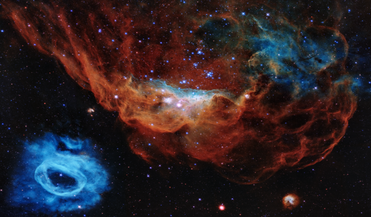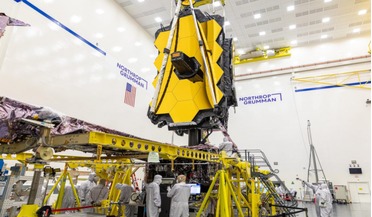 May 2018
PLATO the habitable zone explorer
May 2018
PLATO the habitable zone explorer
... onboard for up to six and a half years of operation, so extending a stare is also a possibility. PLATO takes the multi-telescope, wide field-ofview concept to the extreme There is another problem to overcome, however. Transit observations only give...
 10 April 2019
Ring of fire around black hole revealed for first time
10 April 2019
Ring of fire around black hole revealed for first time
... have achieved something presumed to be impossible just a generation ago. Breakthroughs in technology and the completion of new radio telescopes over the past decade enabled our team to assemble this new instrument — designed to see the unseeable.”
 28 April 2020
Hubble turns 30!
28 April 2020
Hubble turns 30!
... longevity can be attributed to five space shuttle servicing missions, from 1993 to 2009, in which astronauts upgraded the telescope with advanced instruments, new electronics and on-orbit repairs. The venerable observatory, with its suite of cameras...
 27 March 2019
Storm-plagued exoplanet revealed in detail with GRAVITY
27 March 2019
Storm-plagued exoplanet revealed in detail with GRAVITY
... it was born from the desire to observe very small details on faint objects. It sits on ESO’s Very Large Telescope Interferometer (VLTI) and represents a huge step forward in observing objects in visible light. Interferometry works by combining light...
 29 December 2021
Success so far means JWST has enough fuel to extend its science lifetime, NASA say
29 December 2021
Success so far means JWST has enough fuel to extend its science lifetime, NASA say
...of the mission. These include “station keeping” manoeuvres – small thruster burns to adjust JWST’s orbit; pointing the telescope toward science targets; and momentum management, which maintains JWST’s orientation in space. The extra propellant gained...
 10 April 2017
Super-Jupiter mass planet found in the galactic bulge
10 April 2017
Super-Jupiter mass planet found in the galactic bulge
... “Campaign 9” of the Kepler 2 mission, also known as the K2C9 program, which involves the recovered Kepler space telescope working in conjunction with ground-based observatories to find possible events suitable for observations on larger...